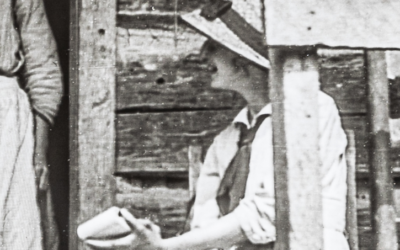Lois Laverne Williamson, better known as “Molly O’Day,” was born to a coal mining family in rural Pike County, Kentucky. As a child, Molly’s favorite country radio show was the WLS’s National Barn Dance because they tended to feature more female singers. By the 1930s, radio shows had inspired Molly and her brothers, Cecil “Skeets” and Joe “Duke,” to pick up instruments of their own. In 1939, her brother Skeets began working for a radio station in Charleston, West Virginia, and invited Molly to join the show’s band, Ervin Staggs and His Radio Ramblers, as “Mountain Fern.” After this band broke up, she adopted the stage name “Dixie Lee Willaimson” and joined her future husband Lynn Davis’s group, The Forty-Niners.
She adopted her final stage name, “Molly O’Day,” in Kentucky in the early 1940s while The Forty-Niners toured throughout the south. During this time, she also met and befriended the then-unknown Hank Williams in Alabama. In 1945 Molly and Lynn moved to Knoxville and enjoyed great success with WNOX, where they performed popular duets and Molly’s powerful and soulful solo performances captivated audiences. In 1946, The Forty-Niners changed their name to the Cumberland Mountain Folks, and Columbia Records offered Molly a recording contract. She recorded one of her most popular hits, “The Tramp on the Street,” and five songs written by Hank Williams, making her the first major artist to record his music. In the mid-to late 1940s, her popularity continued to increase and she began to participate in more promotional appearances, tour more widely, record more frequently, and broadcast daily.
However, by the end of the 1940s, Molly’s enthusiasm for the the lifestyle of an entertainer had begun to dwindle, and in 1949 she was hospitalized, possibly due to a nervous breakdown. She did two final recording sessions for Columbia in the early 1950s, but after diagnosis of and surgery for tuberculosis in 1952, Molly turned down multiple offers to return to show business. Instead she began traveling with her now-ordained husband to evangelize primarily in small coal mining communities throughout West Virginia. She recorded a few religious albums in the 1960s and began hosting a gospel radio program with her husband in 1973 until her death in 1987. Molly’s emotional vocals and powerful honky-tonk wailing style made her one of the most prominent pioneering female vocalists despite a relatively short commercial career.




